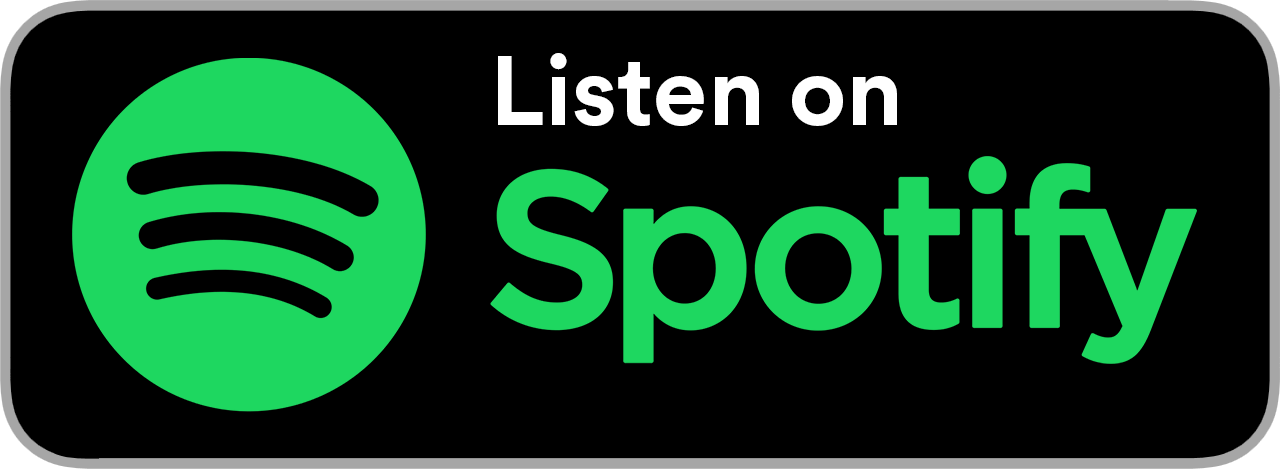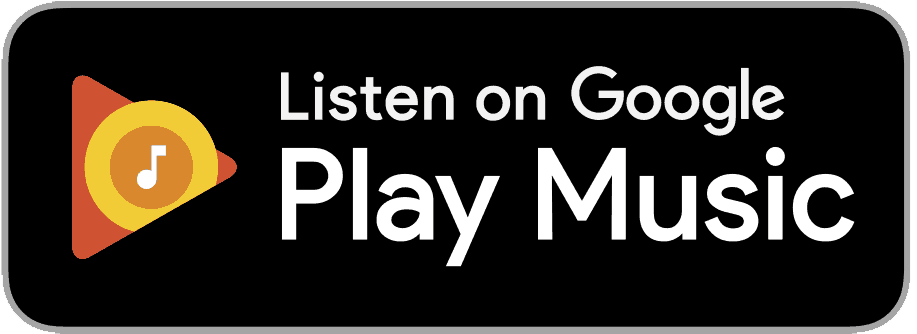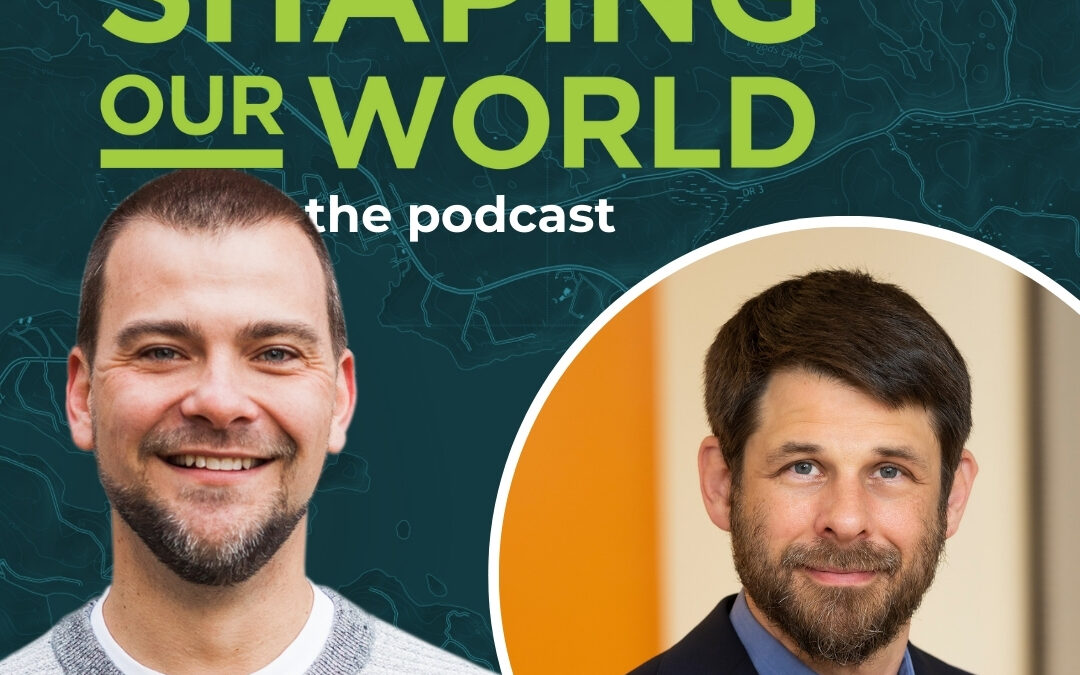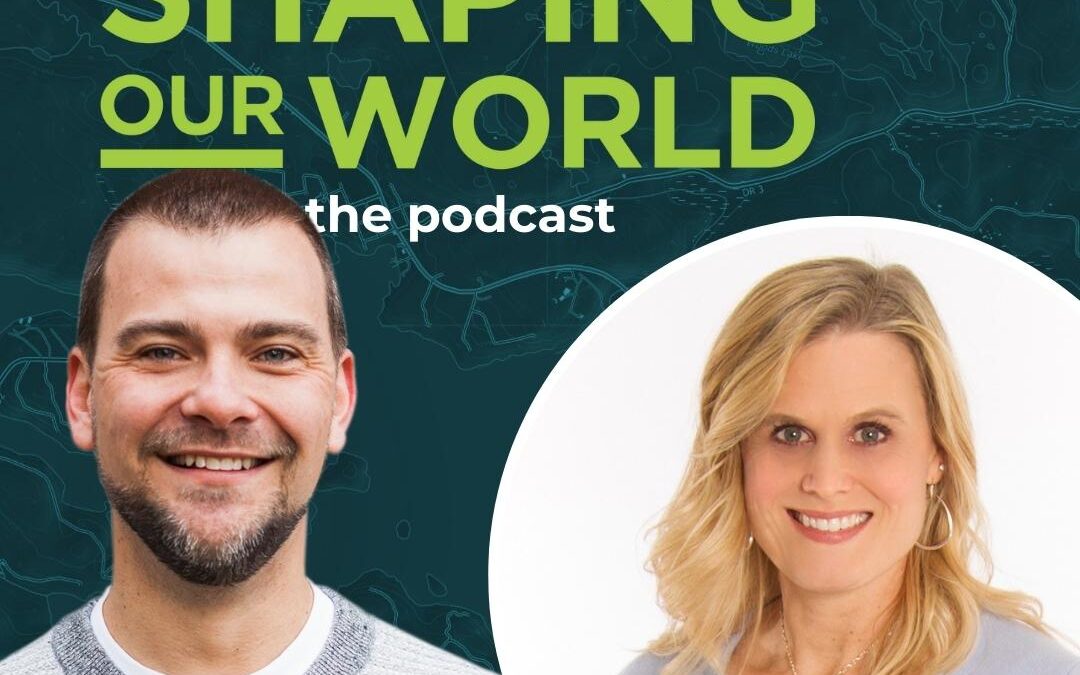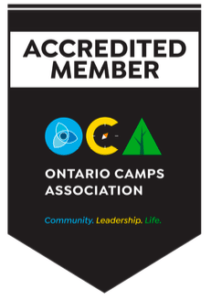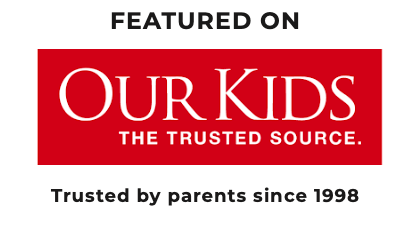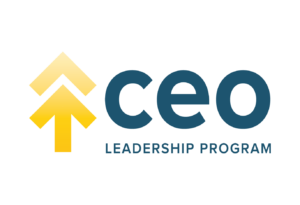[00:00:12.990] – Speaker 3
Well, hey, everyone. Today we’re going to be diving into courageous conversations with someone who has had, I’m sure, quite a few of these conversations with students and parents and teachers over her vast career in the education world. Today, we have Elizabeth Bennett. Elizabeth Bennett is an award-winning principal with over 35 years of experience in the school system as an educator and administrator. She’s also been a contributing author in two best selling books and has just released her own book called Courageous Conversations: A Guide for Parents to Understand and Connect with their Teens. Through her time, she also coaches parents on how to have these courageous conversations with their kids.
[00:00:58.260] – Speaker 2
To build healthy.
[00:00:59.380] – Speaker 3
And helpful relationships, even now after she’s officially retired from the educational world.
[00:01:06.380] – Speaker 2
As Elizabeth would say.
[00:01:08.370] – Speaker 3
She has a relentless passion for transforming this broken, violent, and socially isolated environment of dysfunction to a space of courageous conversation, empowering people to take on their lives with joy and love. She’s dedicated to sharing this message of hope, especially with parents, educators, business, and community leaders. And you’re going to hear today in our conversation that she shares a lot of that message and really helps us unpack how to have courageous conversations. And there’s so many.
[00:01:41.140] – Speaker 2
Really helpful tips.
[00:01:43.440] – Speaker 3
And insights that she can provide from her experience in the work that she does right now. And it’s almost like we’re going into one of her coaching conversations. So let’s roll and listen to this conversation with Elizabeth Bennett. I’m sure you’re going to enjoy it.
[00:02:05.810] – Speaker 2
Elizabeth, thanks for joining us.
[00:02:07.390] – Speaker 1
Well, thanks so much for inviting me, Chris.
[00:02:10.130] – Speaker 2
Yeah, no problem. It’s great to have you with us. So people heard a little bit about you through the intro and your bio and rich history and education. But we’re just going to take a second to get to know you, help our listeners get to know you a little bit better. And we call this podcast Shapping Our World. So we’re going to ask you about your world. And so what shaped your world when you were a teen, a child? What are some of the big influences for you growing up?
[00:02:37.610] – Speaker 1
One of the big influences for me was my connection with teachers. I think in some cases they were my saving grace. Things weren’t always the best at home. There was some domestic violence and abuse and so on. That helped me to connect because I didn’t have very many folks to be able to connect with. I just felt like I was the odd man out in the best friend department. I was always number 3 as opposed to number 1. That was what happened. I noticed some of those things are still continuing to happen with our teens.
[00:03:18.120] – Speaker 2
I was just about to say, I think there are a lot of adults who can resonate with that, and a lot of kids today, I’m sure, can resonate with that. I know that’s led you, as we talked before, into a little bit of your work. Let me switch gears today. Not your work world, but personally, what’s shaping your world? When you’re not thinking about the work you do, what are you interested in? What do you spend your free time doing?
[00:03:43.790] – Speaker 1
Well, I sure do love the ocean, except I don’t live very close to it. I happen to live close to the mountains, which is another really magical place. I live in Calgary, Alberta. I have a dog. I love nature. My running is one of my passions, so I do that. I hiked up Kilmajaro, had a great time there, and went on a Safari and built my own home. There’s lots of fun things that I’ve done in my life that I sometimes forget. Thank you for asking that question.
[00:04:15.230] – Speaker 2
Yeah, no problem. It just helps us get to know friends quickly as we dive into deeper conversation. Why don’t we shift gears and talk about… You spent your career working alongside young people. Why don’t you tell us today what you’re doing that’s helping shape the world of kids, teens, young people? Tell us a bit about what you actually are doing today.
[00:04:40.220] – Speaker 1
Well, Chris, I’ve been in education for a very long time, and although I stepped away, in other words, most people would know it as retirement, I wanted to shift gears in that space because I wasn’t really finished. I was complete with the school and in the school district, and it was an outstanding career. There’s no doubt about that. But I wanted to continue to do the work that I was doing in classrooms with teachers and parents and students and so on. I wanted to get out into the world and be able to touch more people. What I’m doing now is I coach parents, I coach families, I coach teens, and take the time to help them work through what’s going on in their relationships. Why are they broken? What is it that I can help to coach them with so that they can reestablish or create a new relationship with each other as families?
[00:05:43.920] – Speaker 2
Yeah, that’s amazing. I think today we’re going to benefit from a little bit of an inside session with you, so that’s fantastic. One of the things that you’ve been doing, you have written a book and I know it’s been brewing for a long time and it’s called courageous conversations. I want to ask you about what a courageous conversation is. But before I do that, my own curiosity has peaked to say, what was the catalyst to focus on this area, courageous conversations?
[00:06:20.230] – Speaker 1
You know what? It started with the whole idea that I wanted to be the expert and I wanted to be the magic bullet for Endgame bully. That was really the impetus that started this because I could see it in my classrooms, I could see it in the schools, and I worked with community agencies to build a program and so on. I wanted to implement that in schools. Then I was going to be the one that was going to do that. As my journey continued with kids and having more conversations with them and speaking with parents and folks in different agencies and so on, including police services and child and family services and so on, I recognize that really it’s not about a one thing that’s going to magically change the world. It’s about community, it’s about connection, and it’s about relationships. Then it shifted because the book was going to be just about bullying. That was it. I was going to have this big answer. As I went through that, it’s now only one chapter in.
[00:07:29.280] – Speaker 2
My book. Oh, wow. Yeah.
[00:07:31.290] – Speaker 1
Because there are so many other elements that come into play to take a look at, to unpack, to peel away the onion piece or an orange or whatever you want to call it. Each of those slices, each of those pieces is something that we need to look at because they all have an impact on whether we have relationship or not.
[00:07:55.690] – Speaker 2
Oh, my goodness. Yeah. I think that’s true with bullying and with so many of the other difficult, challenging things we face in life is they’re not as simple as… There’s a much more holistic thing happening, right? A bit more complexity beyond. But yeah, being around summer camp, we talk about that a lot. If kids don’t feel safe, then it’s really hard for them to thrive in that environment. T hat’s true at school. It’s hard to do well in education when you constantly feel like you’re under threat of some sort there. I love that that’s driven that. You moved from that idea of fixing silver bullet for bullying and moving broader, and you’ve come out with your book that is called Courageous Conversation. Just right off the top, what is a courageous conversation?
[00:08:51.770] – Speaker 1
Well, a courageous conversation for me is about being vulnerable. It’s about stepping out of your own comfort zone and being with the person that you’re having that conversation with, to ask difficult questions. Some of them don’t necessarily need to be difficult, but they might be outside of what your perspective is or how you see the world or where you’re coming from as opposed to having that conversation and being with that other person that you’re having that difficulty or you want to know what’s going on or so on. You need to be open to stepping into something different.
[00:09:37.100] – Speaker 2
That’s really good. And as you step into it, and you’re practicing this with families and teachers and kids, and you’ve been doing this for your whole career. What do you, have you experienced are the topics that emerge from courageous conversations that are really helpful for kids? And do you think there are some things that teenagers or kids really want to talk with their parents but feel they can’t?
[00:10:05.510] – Speaker 1
Oh, absolutely. We know that bullying is rampant and we know that bullying is rampant, and we know that social isolation is on the increase and mental health concerns are through the roof. And now we’re talking about suicide as the second cause of death of teens. That shouldn’t even be on our radar. And some of those things happen because there’s so much pressure that kids carry with them. We’re talking about sibling rivalry or looking at their own lifestyle, and they’re trying to figure it out and they don’t know where to go with that. There’s all kinds of stuff going on at school if they’re being bullied or if they’re feeling like they’re really uncomfortable about seeing things around them and they want to have those conversations with their parents. Sometimes they can’t because there might be a situation similar to my own home where I had stuff going on and because of what I was hearing in my own house, it wasn’t going to be a conversation I was going to have there.
[00:11:12.270] – Speaker 2
Yeah. Well, so on that, what do you think are some of the biggest barriers to communication that exists between young people and their parents or adults that care about them in their lives that you feel like… When you’re a parent, you feel like, Well, my kids just aren’t talking. What’s often getting in the way?
[00:11:31.210] – Speaker 1
Well, part of that is that kids often don’t know about their own emotions. They can’t put them in any semblance of order. They’re quick to respond to things, or they have rude, crude, and socially unacceptable behavior, or their hormones are raging. There’s all kinds of stuff going on as teenagers, and they don’t have the skills or strategies to be able to deal with that by themselves. Oh, my gosh, we even look at it as adults, and sometimes we don’t either. If they’re a teenager, they haven’t had this too many years on this Earth, so they haven’t had a chance to really figure it out or do anything with it. Sometimes those are the challenges because they don’t know how to explain it to anybody. Unless you have questions that you can ask, or, Tell me a bit more about that. When you’re feeling like this, where is it in your body? What’s going on? Try and explain it to me. Then there’s that extension of conversation, and then there’s that extension of conversation. Then it becomes much more of a place of safety, like you mentioned before, at a place where they can then feel like there’s a chance to have that conversation.
[00:12:52.960] – Speaker 1
Because remember, some of what we’re looking at is we have our own filters. We have our own background, we have our own our own whatever’s going on in our particular personal lives, even as adults. We look at that and we see through a filter, we speak through that filter, we hear through that filter. Our kids are doing it, have the same filters in place. They might not be trusting if a parent decides that they’re going to try something different. But that’s where the vulnerability piece comes in with a parent who says, You know what? I don’t have all the answers. I sometimes don’t know what to say to you, but I really want to connect with you. So how about if we tried this?
[00:13:39.970] – Speaker 2
Yeah, that’s really good. The people who listen to this show know every once in a while I can admit my own challenges. I have a 16 year old, and one of the things I am tempted to do often is I can interrupt early because I want to… We start talking and I just interject a thought or an idea. B eyond the deep emotional thing of that, she’s just like, Oh, well, I’ll stop talking now. S he stops talking. I automatically shut it down by my need to interject. I’m sure you’re going to coach me indirectly as we go through the rest of the interview. But that I often find is a barrier, too, is the way we talk with our.
[00:14:28.180] – Speaker 1
Kids.
[00:14:29.340] – Speaker 2
Doesn’t create the right environment for some of these courageous conversations. I want to transition a bit because when I think about a courageous conversation, it’s easy for a parent to say, Oh, it’s about me as a parent finding courage to have conversations. But this is a lot to do with young people courageously. I think when we say conversation, we think about talking. But in your book, you give parents really practical tools to connect better with their kids, including strategies of dedicated listening. Can you tell us about why listening is important and what those strategies are?
[00:15:06.080] – Speaker 1
Well, listening is important so that you really get here and be with your child. When you just mentioned that part about interjecting your own peace there, we are, typically as adults and parents and teachers and so on, we’re in the helping profession all the time, each and every one of us. We want to solve kids problems right away because there are children or we have a vested interest and so we want to do that. We tell them what we’re thinking. P art of that is we need to step back from that. These strategies aren’t in any particular order, but they also are to weave in and out of each other. The first one that I usually talk about is understanding versus judgment. We need to look beyond our kid’s behavior and their emotions and we need to get in underneath it so that we understand what’s going on for them and not as a quick fix to, Oh, well, don’t worry about that and just get to school because that’s a typical response for us. What we want to encourage parents to do in that conversation is to really be curiously engaged. Now, understand what’s going on and put your judgment aside because your kids are individuals.
[00:16:29.170] – Speaker 1
They are each and every one of them. You might have a house full of kids, Chris, but each one is individual. In that connection that you have with them, you want to find out really what’s going on for them.
[00:16:42.930] – Speaker 2
The.
[00:16:44.610] – Speaker 1
Second one that I talk about is intentional time. That means removing distractions, turning off your devices, getting up from the TV or the video games, putting your cell phone away for a while, and set some time aside to really be intentional with your child. So that could be… I mean, parents have said to me, Oh, sometimes it works for me when I get in the car with my child or my teenager. So the space is condensed enough and close enough where you can’t simply step out of your car in moving traffic. But that each person has their own personal, I want to call it personal bubble as an example. So in this particular case, it creates a space that’s close enough and far enough away so that if your kid decides to pull up their hoodie, if they’re looking at their shoes, if they’re looking at their hands or out the window or so on, they don’t have to have that eye contact because it’s not necessary. You’re not interested in that piece and we often get caught up in that, right? You need to be looking at me. You need to we need to have eye contact.
[00:18:00.860] – Speaker 1
It’s not about that. It’s about listening. It doesn’t matter if they’re lying on the floor, if they’re sitting on… It doesn’t matter. It’s about the listening piece. When you set that intentional time, it gives you an opportunity to be able to create a new conversation. It could be talking about current events. What do you think about this? I read this article. It gets them in a more calm and beginning to open because keep in mind, too, that there might not be trust there yet. This is an opportunity to be able to start those conversations and say, What do you think about it? And not to be rushing into, Well, that’s a stupid thought, or that really just allowing that space to find out really what your kids think because too often we don’t value them and we don’t listen. Anyway, moving into the next one is called finding flow. That allowing your team to guide the conversation. You might throw out that sentence starter and say, Hey, I read this article or I heard this thing or so on. What do you think? T hey can continue guiding the conversation. You continue to be curiously engaged.
[00:19:23.700] – Speaker 1
The next one is understanding first and speaking second. This is a chance to have you ask them, What do you want my role to be in this conversation?
[00:19:39.040] – Speaker 2
S.
[00:19:39.770] – Speaker 1
Ometimes with that, it really is, Do you want me to just listen? If this is an opportunity for you to vent about something else, do you want me to help you solve the problem? Do you want a different perspective? You’re clear and giving them an opportunity to be valued in that conversation to say, Wow, I have this opportunity to choose what I think my parent should be doing for me right at this moment.
[00:20:06.920] – Speaker 2
Yeah, that’s powerful.
[00:20:08.310] – Speaker 1
And share solutions only if you’re requested.
[00:20:12.260] – Speaker 2
Oh, yeah. I could learn from that lesson for sure.
[00:20:18.080] – Speaker 1
And then the last one is about reflective engagement. So you want to choose to let go of your solutions. Use some of your child’s words in what it is that you’re saying back to them. Not to be like a psychologist or a therapist, but really just say, When you said this, and use their words, don’t make up your own, but use some of what you just heard them say, and acknowledge them for what they’ve said, being part of the conversation. Maybe there’s an opportunity for you to say, You know what? That took a lot of courage for you to tell me that. I can’t believe that you held on to it for so long. It must have been really difficult for you. You’re valuing their struggle, their challenge, whatever’s going on for them and really being connected to that.
[00:21:14.600] – Speaker 2
Then.
[00:21:14.910] – Speaker 1
Thank them for sharing because that’s massive.
[00:21:21.490] – Speaker 2
I think there’s some people out there listening to say, if I did this, my team would be shocked looking at me like, what is happening.
[00:21:29.970] – Speaker 1
Right now?
[00:21:31.010] – Speaker 2
But just a couple of thoughts on those things. Number one, in the intentional time, I always find driving with my daughter is the best. Listening to music, maybe sometimes no agenda, and it just creates an environment. Sometimes being uncomfortable in the silence, even if you’re on a topic and then it goes quiet for a while, sometimes they’re just processing and thinking, not just disengaged. I think one of the things that I love about what you’re saying and even the approach is it feels slower as well. You mentioned earlier that the kids don’t even know what they’re feeling. And so sometimes the initial problem that they’re even bringing to the table is not really what’s going on. And if you hear that problem come up, you can go in and fix it. It’s all of a sudden it’s like this exam and I’m stressed out about it. And you start talking and the more you talk, you realize it actually isn’t the exam. It’s something that happened with a friend earlier. And so as you really listen and slow it down, I think you said maybe an onion or you can peel back some of this to really get at what is going on and creating that place where kids actually can figure out what they’re feeling because their initial take is like, I’m mad at this or I’m frustrated at that, but that might not really be what’s going on.
[00:23:01.940] – Speaker 2
They might not even know. I love how this slows things down and just creates that environment. It’s really helpful. You talked about relationships and how important they are. I think one of the dangers would be just assuming that these courageous conversations and listening strategies are these things we swoop in and do and then disappear off. We know how important relationships are. You talk about ways that parents can bond with their team and how that sometimes even helps with not letting things end in a fight. What’s your advice when it comes to connecting with and bonding with our teenagers or even kids at whatever stage of life they are?
[00:23:45.780] – Speaker 1
Well, you see, a lot of that goes back to the conversation that we have been having. There isn’t just one thing or two things that are going to magically change everything. This is an ongoing process. Understand that this is not about judgment and this is not about the things that parents have done or so on. But this is really about a continuous journey together because that’s what makes it important. That’s what makes the space about connection so valuable in our lives. Because as you know, the social isolation piece, the cell phones, spending hours upon hours on that, looking for likes and looking for going into the virtual perfect world that doesn’t exist. Those are sucking up our kids. Even as adults, we’re far more falling into that same thing. The strategies for dedicated listening, the conversation pieces, stepping into that vulnerability, it’s going to take some time for parents to be able to adjust to trying on something that’s new for them and being honest about saying that to their kids. Look at, this is really new, but I want to be able to find some other way to connect with you. The starting piece is, and these are tips that I typically give parents.
[00:25:28.180] – Speaker 1
Start with these conversations. Get yourself out there beyond your comfort zone because that’s where your kids are. They’re beyond their comfort zone. They don’t know how to deal with what’s going on. Put the cell phone down. Take some time to be intentional with that time. Marketing your calendar so that you say, yes, nothing else is going to distract me. Let’s go do something. Finally, get out and have some fun together.
[00:25:58.720] – Speaker 2
Yeah, it’s good.
[00:25:59.670] – Speaker 1
Do some crazy things together. Go bowling if you’ve never been before, or go tobogganing, or stuff that… Because I’m just thinking of winter things. Go for a hike, go to the beach, go for a coffee together and say, Hey.
[00:26:17.140] – Speaker 2
Because sometimes as parents, we’re like, Our kids don’t want to be around us anymore. They don’t want to do stuff with us. But I don’t know. I work around a lot of kids for a lot of years. I’m not sure there’s very many of them that wouldn’t hop in the car and go through the McDonald’s Drive through at random time of the day, unplanned, not for a meal to say, Let’s go grab some ice cream and fries or something. And that can be starting small, right? Going bowling might seem like, how could I ever get there? But it’s like you said, going to grab bubble tea or a coffee or a McDonald’s Drive through, those things. What I found, Elizabeth, is some of the best connecting times that facilitate the listening and conversations, there’s no agenda or strategy. Right, absolutely. We need to talk about this, or this hasn’t been going well in the house, or I’ve been noticing this. It’s just like, it’s just does. It’s just because I like hanging out with you.
[00:27:16.900] – Speaker 1
Because your kids really want that time with you.
[00:27:21.320] – Speaker 2
Even if they say they don’t. That’s right.
[00:27:23.860] – Speaker 1
Even if they’re doing that standoffish thing or they’re rolling their eyes. That’s my favorite. Girls and girls rolling their eyes. I think they have it down to a fine science. But those kinds of things, those are messages that are telling you that they want that time with you. It’s so important because you know what? We’re always going to be busy. There’s always stuff that’s going to happen. We need to stop from the busy because the kids might not be there. So we can’t wait any longer and our kids are really worth it. So it’s time to really make that shift and be connected with them.
[00:28:06.640] – Speaker 2
As we get closer to the end of this conversation, there’s been already so many helpful things that have emerged, very practical. T hank you for the work you’re doing. I do wonder, I just want to speak in because we are in a unique season of history, really. The pandemic has brought about stuff that in our generation, we’ve never navigated. A necdotally, through camp and through some of the things that I do, I’ve heard it. Parents, I’ve heard it. I’ve heard it a ton from teachers. I’m just wondering, have you perceived more of a willingness or desire for parents to connect with their kids now? Is the pandemic shifted anything in youth mental health? Speak to the current times and is it more significant now than ever? What do you see in the world around us that really makes this a really pertinent conversation and topic for us?
[00:29:07.600] – Speaker 1
What I see is a split in the road. Now we have two directions that are happening. What the pandemic brought on was down one road, you have families that connected. They played games together. They couldn’t go places, but they did things within the safety of their home or depending on what part of the pandemic we were through, they were reconnecting with their larger family as well, extended families. We had lots of that going on. That was where parents had to work with their kids on their computer and get connected with what was going on with their studies or working through those particular things which were bonding, which were establishing a better foundation with their kids. Then you go down this other road over here where some of these kids were trapped in their family situations.
[00:30:14.890] – Speaker 2
We.
[00:30:15.720] – Speaker 1
Know that could be domestic violence, alcoholism, drugs, prostitution, any of those really horrific things that kids have been exposed to.
[00:30:30.050] – Speaker 1
T hat’s where the mental health piece has increased in terms of now we have a bunch of kids who really need more help. But what it has done, though, is it’s brought it to light. They no longer, in most cases, no longer are hiding that and feeling like they’re alone and they’re the only ones that are going through this. It’s given us an opportunity at the same time to say, Okay, now what do we do differently now that we’ve come through this pandemic? What does life now need to look like?
[00:31:05.820] – Speaker 2
And that’s good. And then all the things that you talk about, the intentional conversations and the dedicated listening, and that then facilitates a new way of doing life with your family and giving kids the space to talk about some of the things. Absolutely. And I think you’re right that maybe pre pandemic would not have come up in the same way because things have been… We pressed the pain point a little bit, and the benefit of it is, like you said, things are coming to light and we’re going, Oh, my goodness, we need to manage this and look after this for our kids. I’m wondering, just before we wrap up, if there are teachers or youth leaders or people that aren’t parents listening to this, I’m sure all of the courageous conversations and listening and all that, everything that we talked about, and bonding is a little bit different from a professional standpoint with teachers and stuff. Is there anything additional or different than you would coach a parent on for a youth leader who’s like, There’s a kid coming, or a teacher, There’s a kid in my class. I’m just having a hard time to connect with.
[00:32:21.160] – Speaker 2
Anything beyond what we’ve talked about that you might want to add for that listener?
[00:32:27.340] – Speaker 1
There are some other little tricks that you can use in the classroom, and this is what I’ve suggested to teachers along the way. Oftentimes, they’re busy with trying to get their kids on track, and you know that the diversity of a classroom is quite expansive these days and more coming down on teachers and new curriculum and all kinds of things. What I’ve challenged them to do is to pick four or five kids in their class in a week and really have a two minute conversation with a student at a time in some downtime or figure it out. The teachers are really good about those selective little times and so on. I want you to find out something about what’s going on for them, what’s important to them, something outside of school and curriculum, but really engage with them and find out something that really lights them.
[00:33:23.640] – Speaker 2
Up so that.
[00:33:24.800] – Speaker 1
You can then have more conversation about that. Because somebody’s asked them that question, Oh, my God. That’s not a typical thing. That’s something that you can hold as a genuine piece of connection to this kid that’s in a different space. That can work with whether it’s youth counselors or whether it’s support folks that are in classrooms, whether that could be teachers. That could be because those are the places and spaces that kids don’t get a chance to share with anybody. They don’t often get a chance to shine in something that’s really important and valuable to them. We miss out on sharing and celebrating their gifts and talent because we don’t know that they have them.
[00:34:13.990] – Speaker 2
That’s really good. That’s really helpful. So many practical and helpful tips today. I’m going to say it for you, the resources and opportunities for parents who want to become more engaged in conversations with their kids. Obviously, from our conversation, they can go to your website, which is elisabeth Bennett group. Com, but it takes you somewhere else. Maybe people can get there a different way. Courageous?
[00:34:42.300] – Speaker 1
Oh, courageous. P arents. Com. T hat’s a space where your listeners can pick up a free gift too. It’s also an opportunity to be able to have a connection with me so we can have a discovery call or what I call the Martin strategy calls. That way, if they’re interested in doing some work with me because I coach parents.
[00:35:08.560] – Speaker 2
And.
[00:35:09.080] – Speaker 1
I have a 90 day two connection program. So if that’s something that they’re interested in, then I’d be more than delighted to help support them. Yeah.
[00:35:19.140] – Speaker 2
And definitely pick up your book, courageous conversation. Any other books or resources or things that you’ve come across that could have been helpful for you in navigating and figuring some of this stuff out that you think parents or listeners might benefit from?
[00:35:34.450] – Speaker 1
There are a few books. There’s a book called Bring them Closer by Connie Jacob. There’s a book called Kids These Days by Dr. Jody Carrington, because we all… And in fact, I know both of these folks. We collaborate together, too, in terms of helping to support families, to help support teachers in schools and other caregivers who are out there.
[00:35:59.740] – Speaker 2
As we wrap up, here’s the final question. There’s a parent out there who’s… Well, it’s a two prong question. How about this? There’s a parent out there that’s like, I hear what you’re saying. It’s just never going to work with my teenager. You don’t know them. They’re just feeling a little hopeless around here. Final thoughts for them. Then those parents that are engaging and maybe an encouragement to them as well as we wrap up to just continue to encourage both types of listeners who are working through or are finding it difficult to work through the world their kids are living in today.
[00:36:42.240] – Speaker 1
Well, for the world they’re living in, that could possibly be the opening statement to their kids is to say, You know what? Based on the world we’re living in today with all these things that are going on, I want to keep you close and I want to keep you safe. How can we do that together?
[00:37:07.720] – Speaker 2
That’s really helpful. Well, thank you, Elizabeth, for your time today. Again, so many insightful things that you had to share with us. I know even for me, I was taking copious notes beside me. The thing that I’m going to stick with is asking, and this is going to help me personally, asking what role my daughter would like me to play in a conversation or an issue or something that’s emerging because I’m the dad, I want to protect and solve so I can easily go into that mode. I can tell you, I lost a number of fingers for counting the times that I’ve heard, I just wanted you to listen and empathize. Not in those words, but that’s what I’m hearing. Asking for what role is going to be really helpful for me. I know I’ve taken that away. Thank you so much for the time today and just for what you continue to do. I love that retirement is not retirement for you. You want to continue to help young people thrive. And it’s been our pleasure to have you on the show today. Well, it’s.
[00:38:11.440] – Speaker 1
Been a pleasure to meet you, Chris, and to have this conversation to help shape our world with our kids connected and our families connected in it. So thank you.


